On November 19, 2022, the Penn Museum will unveil our newest gallery, replacing the Canaan and Ancient Israel Gallery installed in 1998. The Eastern Mediterranean Gallery, subtitled Crossroads of Cultures, will display our collection from the region known by archaeologists as the Levant—today including Israel, Jordan, Lebanon, Syria, the Palestinian Territories, and Cyprus— with objects highlighting the region’s confluence of cultures from the Early Bronze to the Iron Ages.
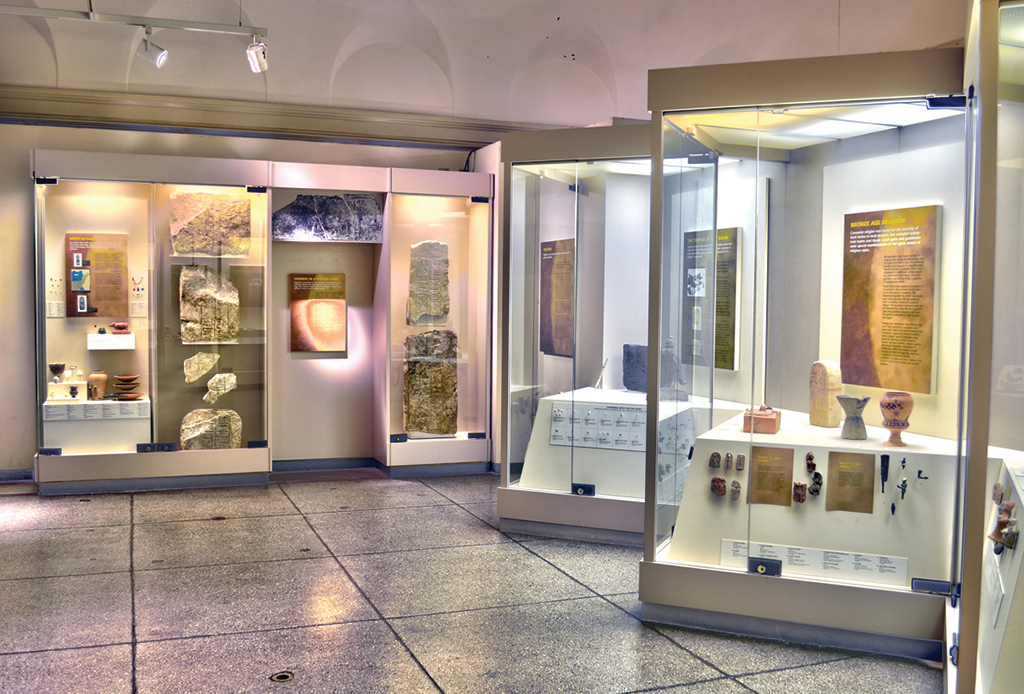
Expedition’s Guest Editor Alisha Adams sat down with Katherine Blanchard, Fowler/Van Santvoord Keeper of Collections, Near East Section, to learn what went into deinstalling this gallery and preparing for the next. While permanent galleries are typically up for the lifetime of a keeper, Katy has had the unique experience of deinstalling three galleries in the last decade alone. Here she shares the joys and challenges of deinstalling, storing, and mounting ancient objects—particularly during the COVID-19 pandemic.
AA: How did the pandemic impact your work as a keeper?
KB: As keeper of the Near East collections, my job is to facilitate their use. I facilitate use for about 100 researchers a year, most of them international. We’re very open-access; I say yes to everybody. And I think that is really important about this Museum. It’s the world’s collection, I just happen to be its caretaker right now.
Because of the pandemic, I had three longterm researchers who were not able to come. I also had four museum studies interns right at the start of the pandemic. We had just started systematically photographing and inventorying everything from the site of Beth Shean so that it would be available online for my curators as they were working towards the new gallery. But I work in a basement and there’s no air circulation, so due to Penn regulations literally no one else is allowed in this space when I’m in here.
It was difficult that I couldn’t have a curator come in for an afternoon. While I know the collection very well, it was hard for me to suggest pieces because I don’t know how they fit into the story that the curators are telling. It was a lot of me with my phone going down aisles, hoping I had enough internet connection to show them the objects.
There was also a lot of work from books. Thankfully, in the 1920s, when much of the Near East collection was excavated, they were really good about publishing. It was wonderful for the curators to be able to discover a sketch of an object in a publication, then ask me to take a photo.
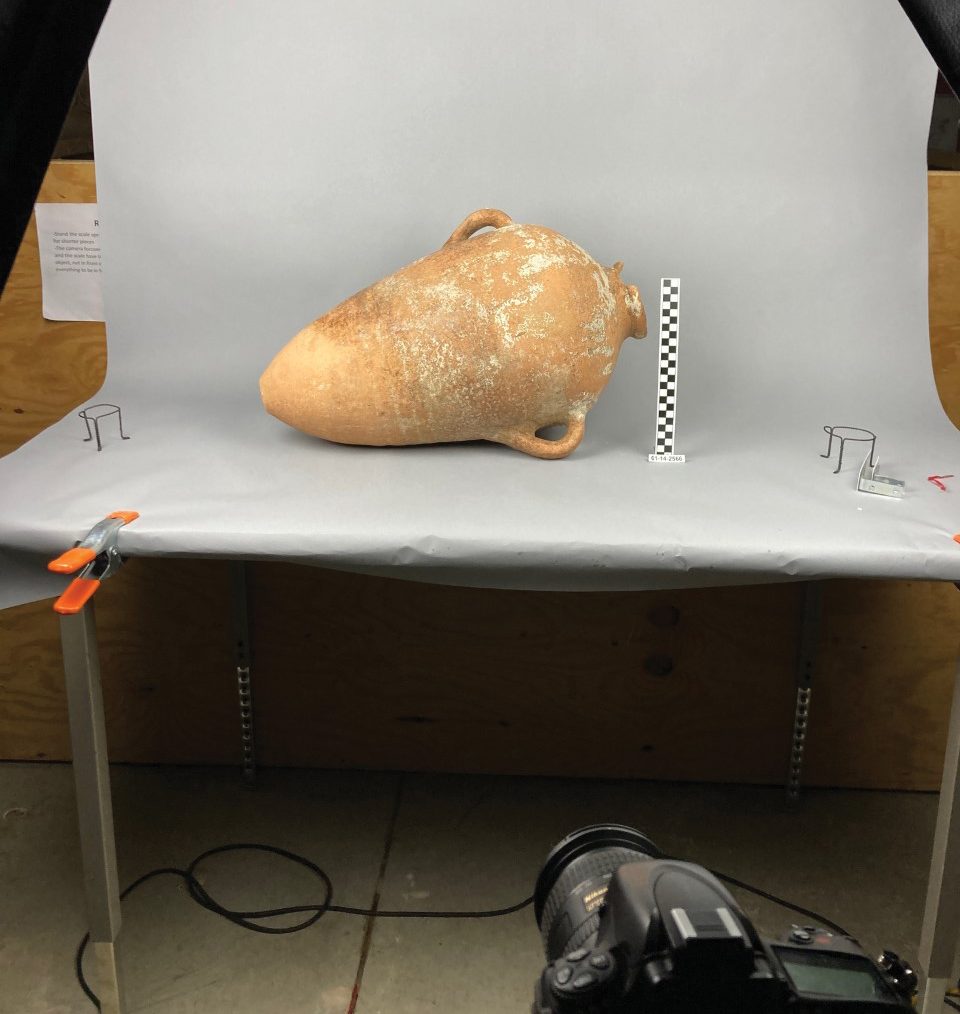
AA: What went into deinstalling the Canaan and Ancient Israel Gallery?
KB: A deinstallation involves months of planning and then daily surprises. But I knew what types of problems to anticipate. From a storage perspective, you have to find room for everything. And a lot of these pieces are so large that they’ve kind of always been on display, or they were in fragments and reconstructed to be put on display.

In August, when we scheduled the deinstallation, the most time-sensitive priority for the Exhibitions and Preparations Departments was the installation of The Stories We Wear [on view in the Merle-Smith Galleries, Lower Level, through June 12, 2022], so it was just me alone in the gallery every day. Because this is not my first de-install, I know my pace and what’s possible. I usually did one cart a day—or, depending on the size of the case, one or two cases—and I was able to put everything away as I went, which was my goal. Everything that came to storage got photographed before it was returned to a shelf.
Still, a deinstallation is never just one person. I worked closely with the Exhibitions and Preparations teams. I worked very carefully with [Special Projects Manager] Bob Thurlow. And when I needed a hand in the gallery, I could text the keeper of the Mediterranean Section on the third floor to come help. I also worked with the conservators to see if there was anything that they wanted to oversee in the deinstallation. I tagged every single mount so Conservation knew whether or not it was earmarked to go into the new gallery. They could then decide if conservation standards had changed since 1998 and note if a piece would need new padding, or should be installed with a deck mount as opposed to a wall mount.
AA: What challenges did you face during this deinstallation?
KB: I had to move carts full of objects, including vault objects, through public galleries, which is something we try not to do. And because I couldn’t de-install only on Mondays [when the Museum is closed to the public], I had to consider when and how I was removing objects from their cases. If I was going into an alarmed case, I needed to let Security know in the morning. And one day I did set off an alarm and Security came up to make sure I was okay!
Another challenge was that I didn’t really have any mount notes from when the previous gallery was installed. I spent a lot of time looking through the glass trying to figure out which pieces I might need tools to take apart. I knew that sometimes jewelry was tied on with fishing wire, so I needed to have small scissors. Sometimes there is a small screw. Sometimes the numbers are wrong on the label. Fortunately, I had the luxury of knowing my predecessors who installed the previous gallery, so I called them and asked, “What were your biggest headaches?”
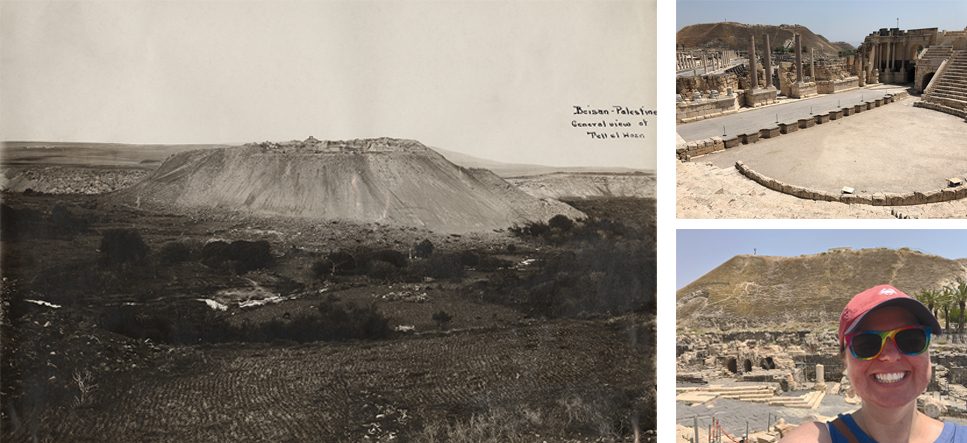
AA: Which objects were most difficult to deinstall?
KB: We knew that the large stone pieces from an Egyptian doorway were going to be heavy. We made sure that everything else was out of the way and we had enough bodies on hand. I pulled a similar piece from storage and we lifted it and put it on a scale so we could better anticipate its weight and how to move it. Because sometimes it’s tufa (a variety of limestone sometimes known as travertine) and it’s really light, and sometimes it’s steatite (also known as soapstone, a type of metamorphic rock) and it’s really dense.
One of the funniest things I had to do involved a display of a reconstructed burial. It had a medical skeleton and a bunch of objects in it, including very small scarabs. And they were set in a mixture of sand and kitty litter. So I had to use a sifter and go through it carefully. You don’t want to miss a scarab!
Not a single object broke during the de-install. Which is remarkable because there were 479 objects with unknown issues. But that’s the beauty of years of experience: you know how to anticipate the questions and handle the material.
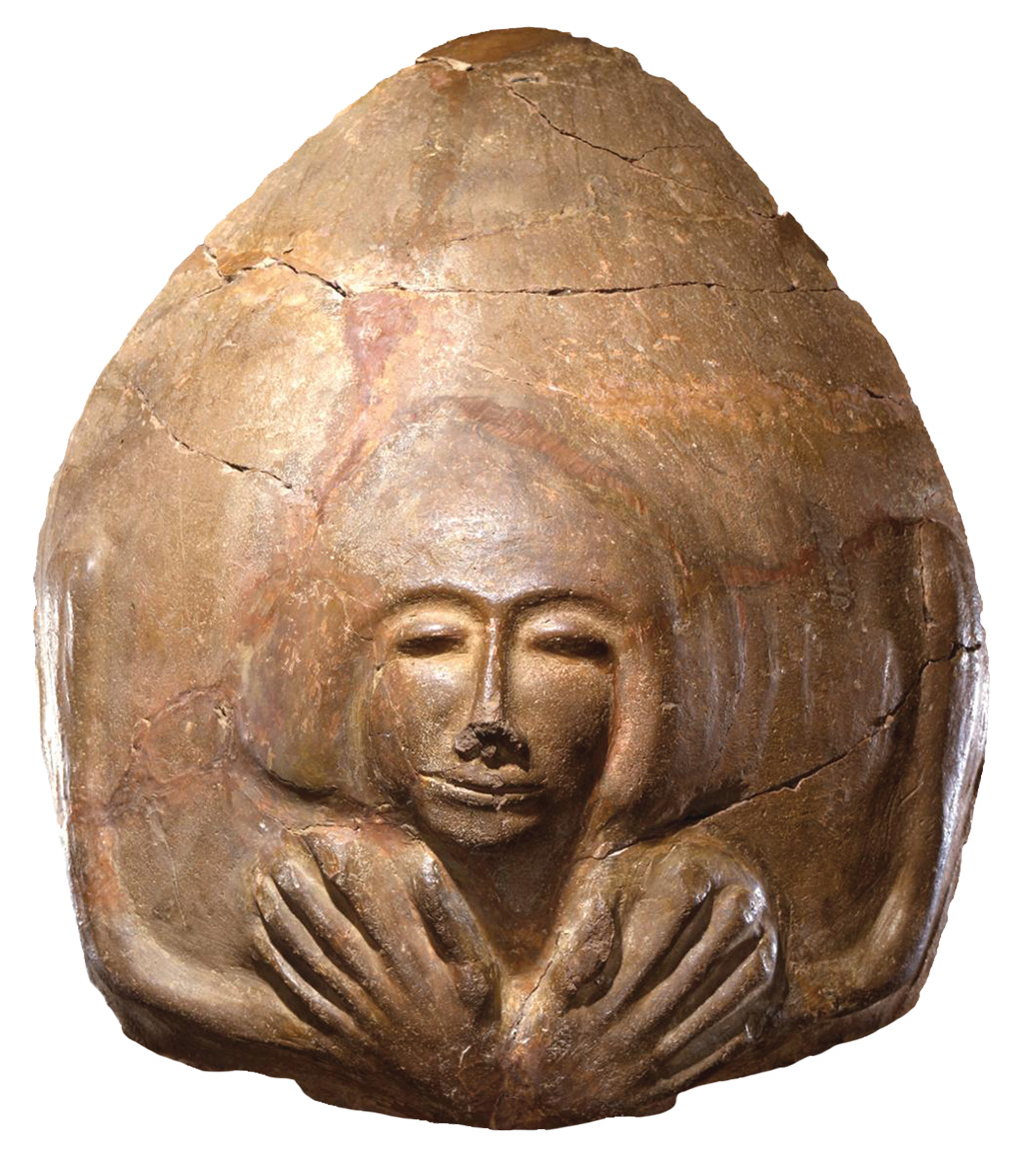
Museum Object Number(s): 29-103-789
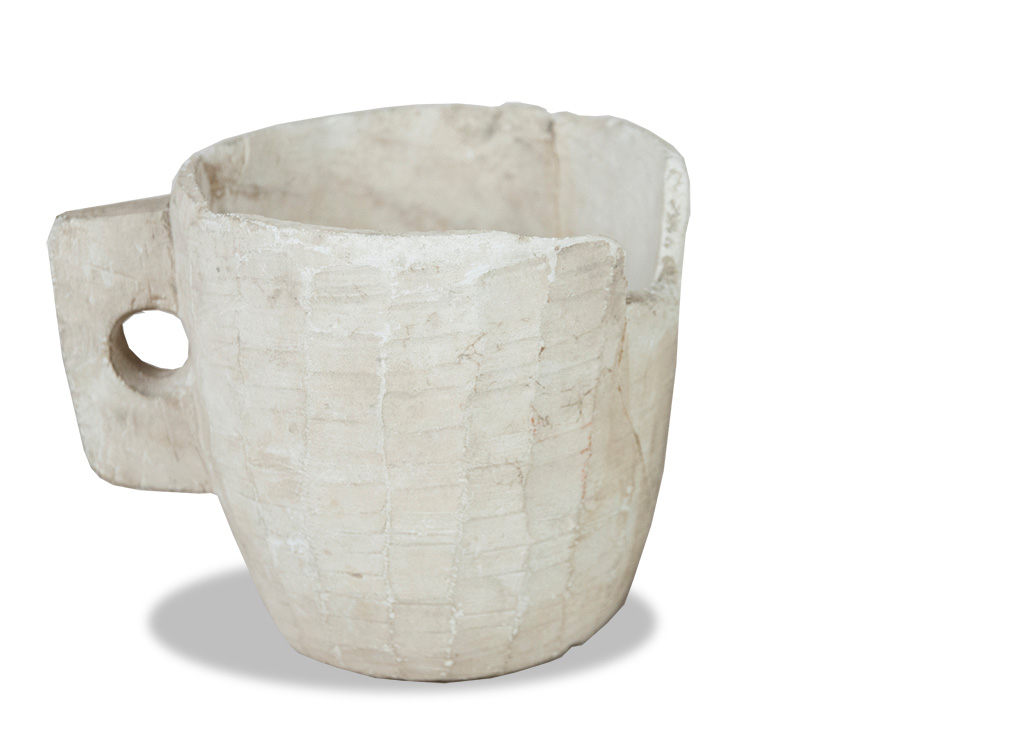
Museum Object Number(s): 62-30-761
AA: What will visitors find in the new Eastern Mediterranean Gallery?
KB: In the Canaan and Ancient Israel Gallery, as well as the new gallery, Beth Shean is the heart of it because that site enables you to tell the story of archaeology. The Museum excavated at Beth Shean [now a national park in Israel] basically the same years as we excavated at the site of Ur [in modern-day southern Iraq], which is our big famous site, so people kind of forget about Beth Shean. But it has everything from 5,000 years ago through to Islamic mosques from 800 CE. There’s this beautiful, chronological sequence showing how many people indeed have occupied the exact same space for all of history.
The new gallery will show how that part of the world is a crossroads of the Eastern Mediterranean. You can’t talk about any of these areas without thinking about trade, transport, and how ideas travel from near and far. For example, there was an Egyptian garrison because it was a giant outpost during the rule of Ramses II. There are beautiful hieroglyphs and giant structures. It also has a large Roman cemetery, so you get beautiful Roman period glass. You get things with Greek inscriptions and others with Latin on them. And then later there are giant columns that were found lying down with Arabic and Hebrew inscribed on them.
The biggest and best material will still be on display. You are going to have some familiar faces—literally, because sarcophagus lids will be up. But at the same time, you’ll have new faces from other time periods.
AA: What are you most excited about in the new gallery?
KB: There’s also a lot of material that will be on display from Cyprus, from our Mediterranean Section. We had really great excavations take place there at the turn of the last century, including by women. It’s very rare for women today to be the permit holders on a site, let alone in 1900.
Another thing is that we’ve always had a large sarcophagus on display and we always display it upright. That’s the way that they’re displayed in the museums in Jerusalem. But they were used like coins and laid flat, so the new gallery will display them like that. I’m really excited anytime something gets to be seen in the way it was used versus the way that we want to see it. Something so simple can help docents, classes, and your average visitor understand the object better.
As an archaeological museum, we have this embarrassment of riches when it comes to material. Why not show it in the context in which it was used and deposited and found?
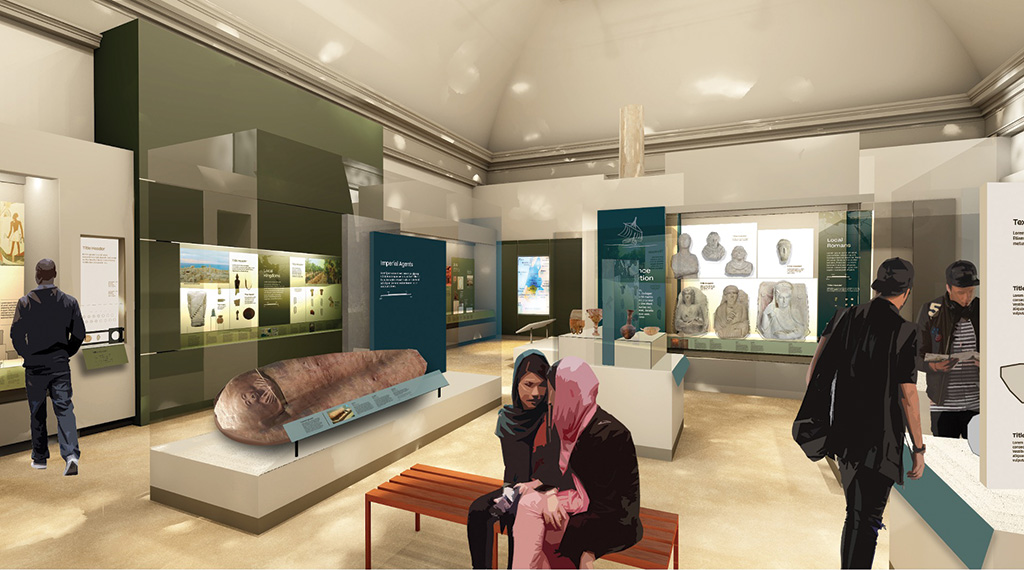
Katherine Blanchard, M.A., is Fowler/Van Santvoord Keeper of Collections, Near East Section.
